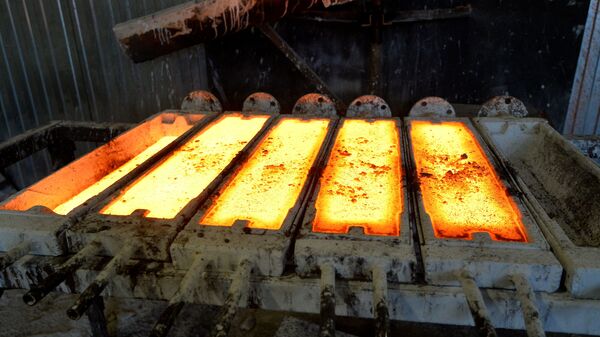Aluminium and its alloys rank second after iron alloys in terms of scalability. Aluminium is easily processed by forging, stamping and rolling; it is also characterised by low density, and aluminium products are lightweight.
Aluminium alloys have high corrosion resistance, high thermal and electrical conductivity (they transmit heat and electric current with minimal losses), strength and ductility, as well as good processibility. They are widely used in the aircraft industry.
For example, in many passenger aircraft, aluminium products account for more than 20% of the mass of all structures. Aluminium alloys replace steel in car parts, which reduces their weight and, as a result, saves fuel.
The technology for manufacturing thin-walled parts of complex profiles, traditional to engineering, is based on sheet stamping methods. A low metal utilisation rate characterises it, a large number of component units and fasteners (complex parts obtained by stamping, which consist of elements that need to be riveted or welded together).
Sheet superplastic forming (SPF), which helps obtain lightweight, solid structures of complex geometry, eliminates these shortcomings.
NUST MISiS researchers have made it their mission to develop aluminium alloys with increased strength at room temperature, capable of superplastic forming at elevated speeds.
“We melted the necessary components in a furnace at a temperature of about 800° C and put them in a special mould. Then we temper the ingots and roll them into sheets. At each stage, it is important to control their microstructure, the parameters of which determine the structure of the final sheet after intermediate operations. For this, we use 20 thousand-power microscopes. Then we analyze the properties of alloy samples, their strength and ductility at room temperature as well as at elevated temperatures (400-500°C) by stretching the sample until it ruptures,” Anastasia Mikhailovskaya, the lead researcher, associate professor at NUST MISiS, told Sputnik.
According to her, the implementation of the superplasticity effect in pressure metal treatment allows obtaining parts of complex shape, very close to the final one, during one operation with relatively low-power equipment. Therefore, this helps to reduce the complexity and cost of manufacturing the product significantly. In addition, the method avoids manual punching, bringing the product to a given geometry.
Today, there are several superplastic alloys for SPFs, most of which have meagre strain rates and an elongation of about 300%, Anna Kishchik, a post-graduate student at NISU MISiS, said.
“It takes several hours to mould one piece of medium complexity at such a speed; the cost of the technological process is 70-80% of the cost of the final product. Therefore, reducing the moulding time by several times will increase production volumes and reduce the cost of the product. We offer new alloys capable of high-speed SPF – this reduces the time it takes to get one part to 15-20 min, and the possible degrees of deformation exceeds 400%. These are the properties of our alloy, which is 20-30% more durable than its analogues,” she told Sputnik.
Before introducing the alloy into production, scientists plan to test it in the conditions of sheet production. Researchers will receive an international patent shortly.



